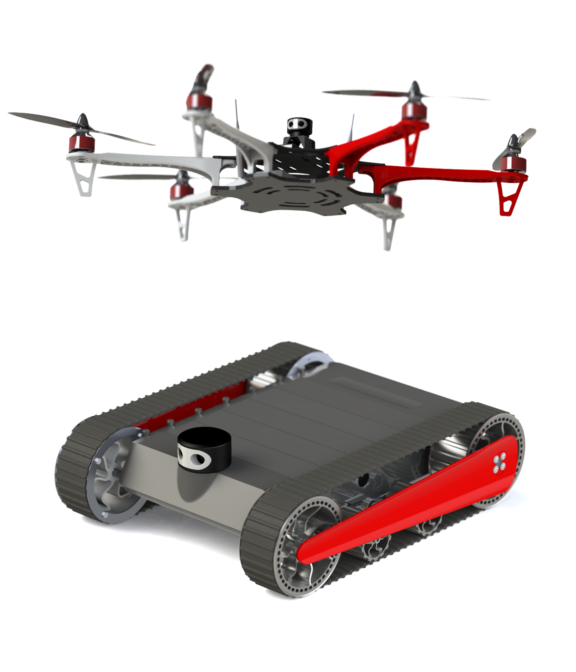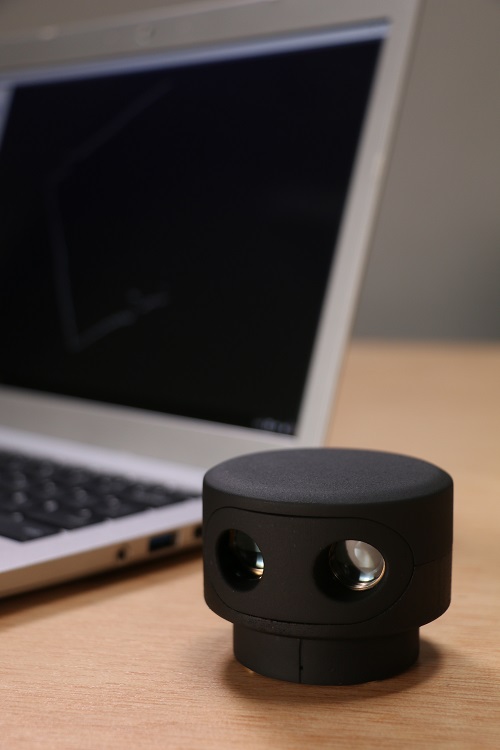Meet Sweep, the 3D Printed scanner LIDAR for your Drone
Posted By Jess Hedstrom on Feb 24, 2016 | 0 comments
LiDAR (light detection and ranging) is a surveying technology that measures distance by illuminating a target with a laser light, and today we meet Sweep the 3D printed scanner LiDAR for your drone. This technology is enhancing the robotics industry and today we discover how and why.
Increasing in popularity, LiDAR has the ability to make high-resolution maps, with applications in: archaeology, geography, geology, geomorphology, seismology, forestry, and atmospheric physics. known as Lidar is sometimes simply referred to as laser scanning or 3D scanning, with terrestrial, airborne and mobile applications.
Last week we spoke with Tyson Messori and Kent Williams of Scance.io they are launching their kickstarter this month and we are proud to share their Sculpteo success story with you today!
Scannable has never released a product before. And they decided to create the very first commercial LiDAR sensor because according to Kent “Tyson and I both have pretty big robotics backgrounds, that’s our passion. A few years ago we started a product development company, and we found that the one thing really holding back sophisticated, capable, mobile bots in the consumer space was having a scanning LiDAR sensor that was affordable enough to make sense.” After that their story is pretty standard for most engineering entrepreneurs, when Tyson and Kent noticed that the product they were looking for didn’t exist (or it wasn’t the right mixture of quality for the price) they decided to make it.
The enclosure highlights the best qualities of minimalism with regard to product design, it’s been described as “like something Apple would make, or something you could pick up on Amazon.com”. This is the power of 3D printed technology you’re able to save on upfront costs while being true to the integrity of your design, and it enables Tyson and Kent to pass those savings to their consumers, the Sweep is only $250 which is impressive considering the average cost of LiDAR sensors can be arond $8,000. Scannable says the sensor weighs 120 grams (about 0.25 pounds), has a range of 40 meters, high ambient light tolerance, “immunity to malicious interference” (hackers?), and gathers 500 points per second with accuracy of 1 centimeter.
So what are the uses of this low cost LiDAR sensor? There’s huge opportunity for drones with this LiDAR technology. A huge problem with drones is that the sensors are unable to determine where the operators are and they tend to smack into something and fall to the ground. This particular sensor can operate in full sunlight and has a full 360 degree horizontal field of view. It is ideal for obstacle avoidance, mapping environments, and providing space dimension measurements according to their website.
“Our main goal right now is learning what people who have never been able to obtain LiDAR are going to do with it.”
Being in the Bay Area has allowed Sculpteo and Scance to strengthen our relationship, Tyson and Kent’s turn around times are some of the lowest we’ve been able to obtain. Providing them with 3D prints in 3 days where while other services can take more than 3 weeks. This has reduced their iteration process and helped them start the Sweep Kickstarter when the planned to, Tyson and Kent have provided us with an opportunity to receive feed back from them so that we can see better what their needs are and how we can help them achieve their goals.
Ps: If you want to learn even more about Sweep and Scance, Stefan Karlsson wrote an extensive post about the project on Techstuffed.


 Connect with Google
Connect with Google Connect with Facebook
Connect with Facebook

